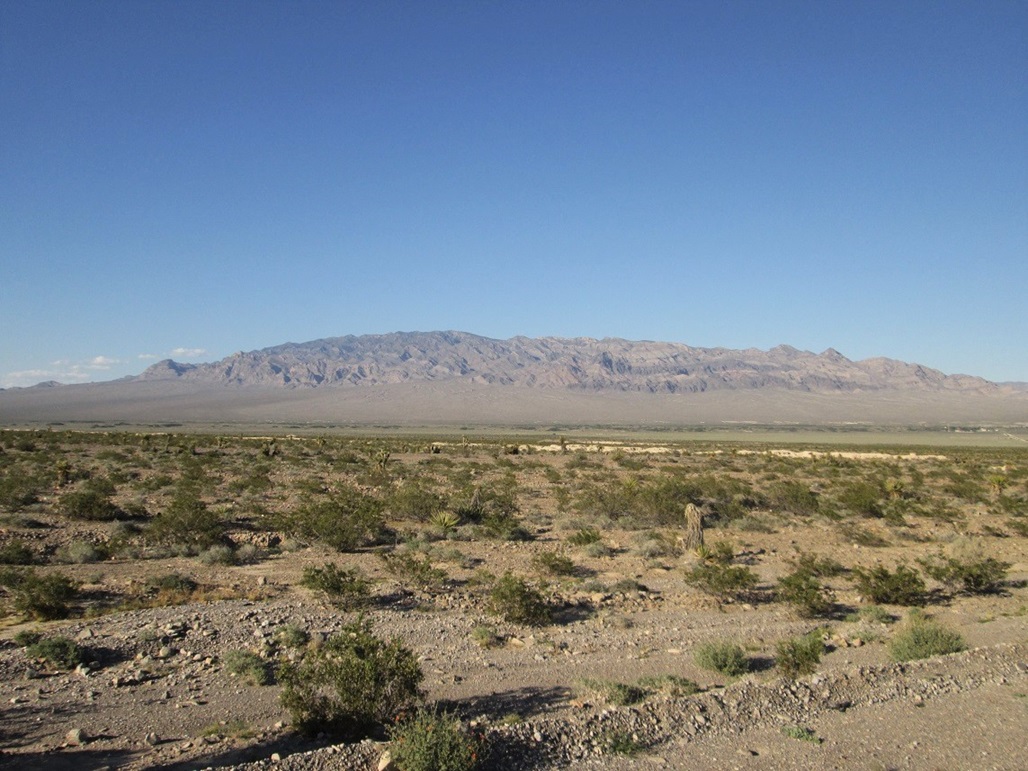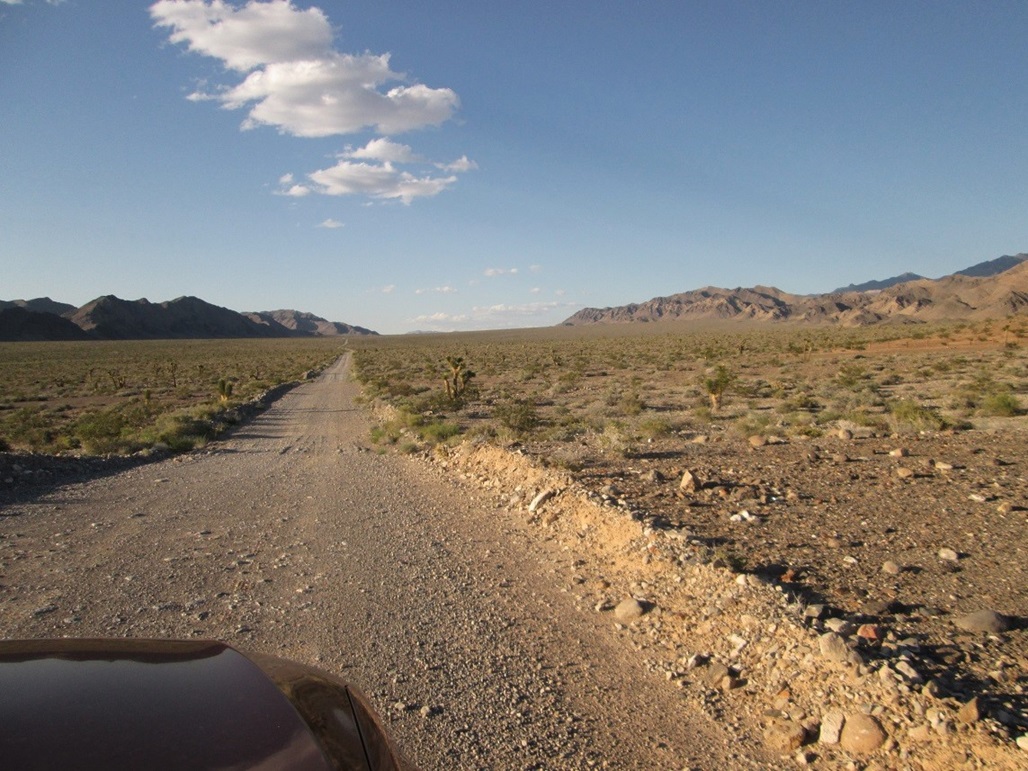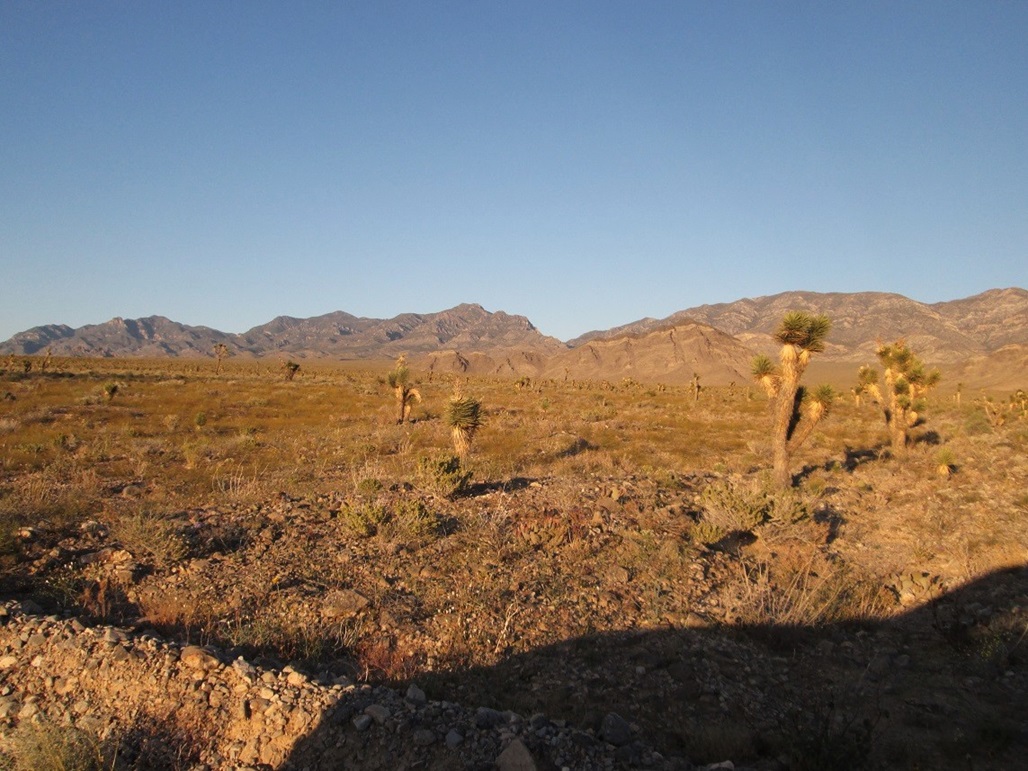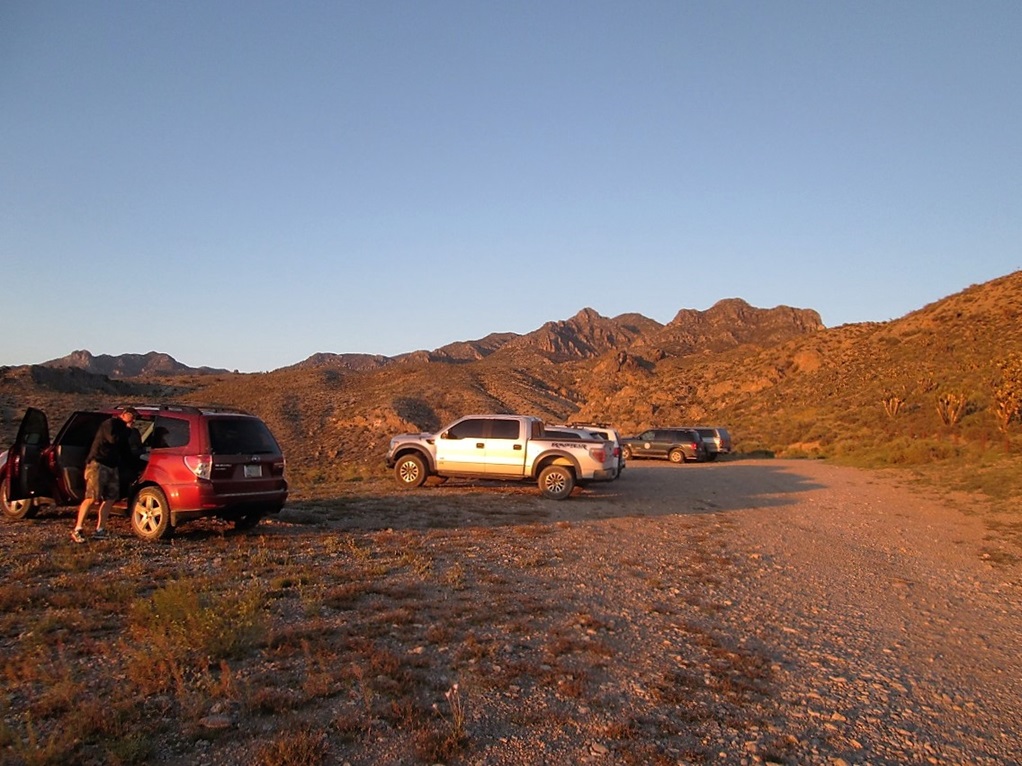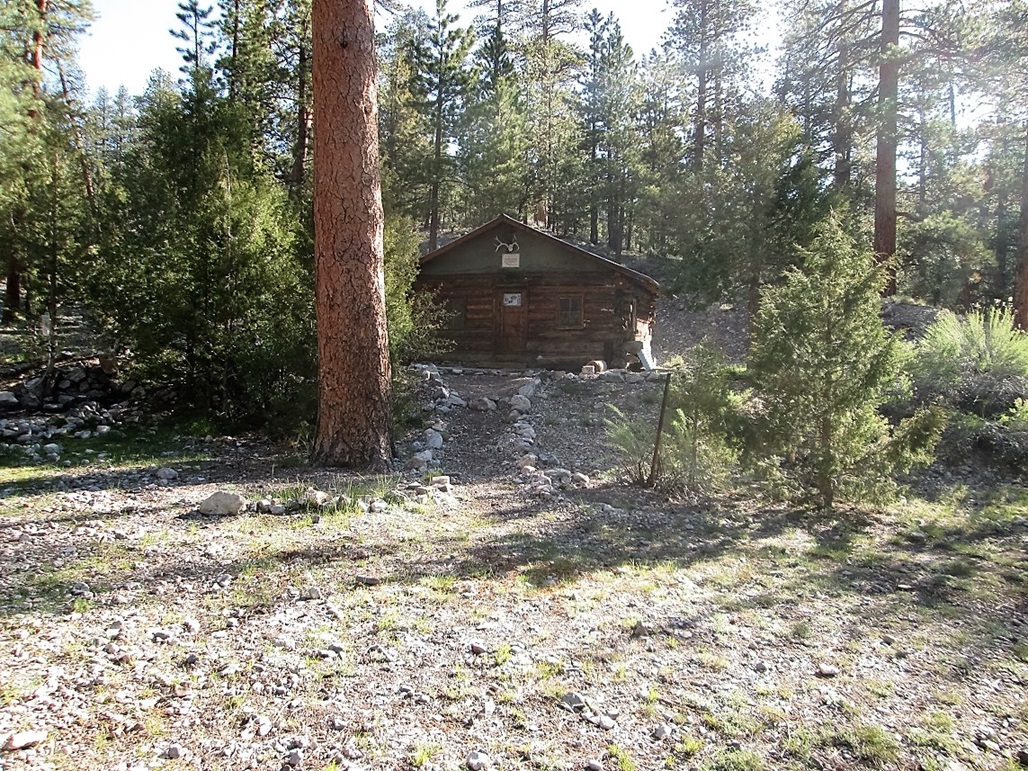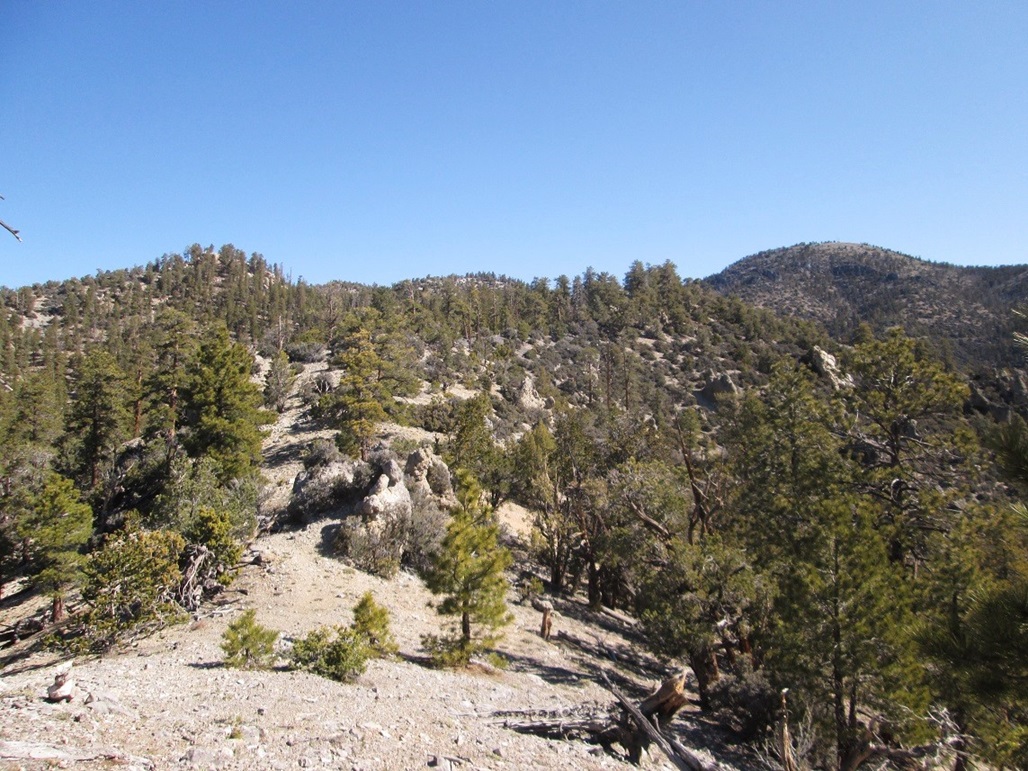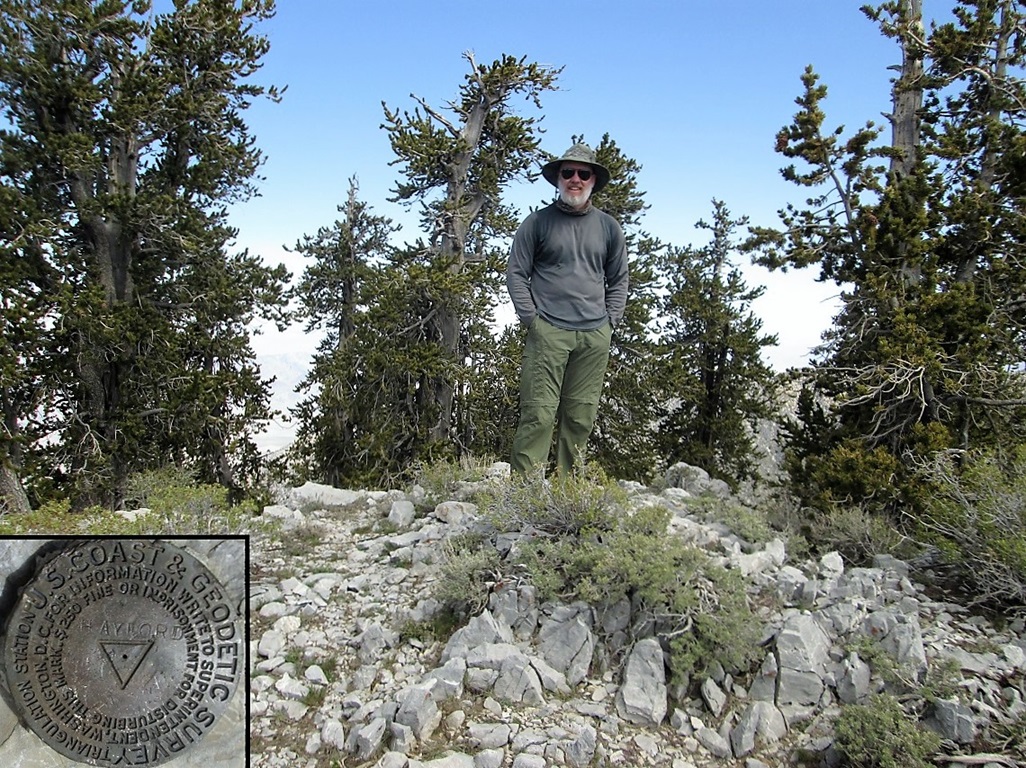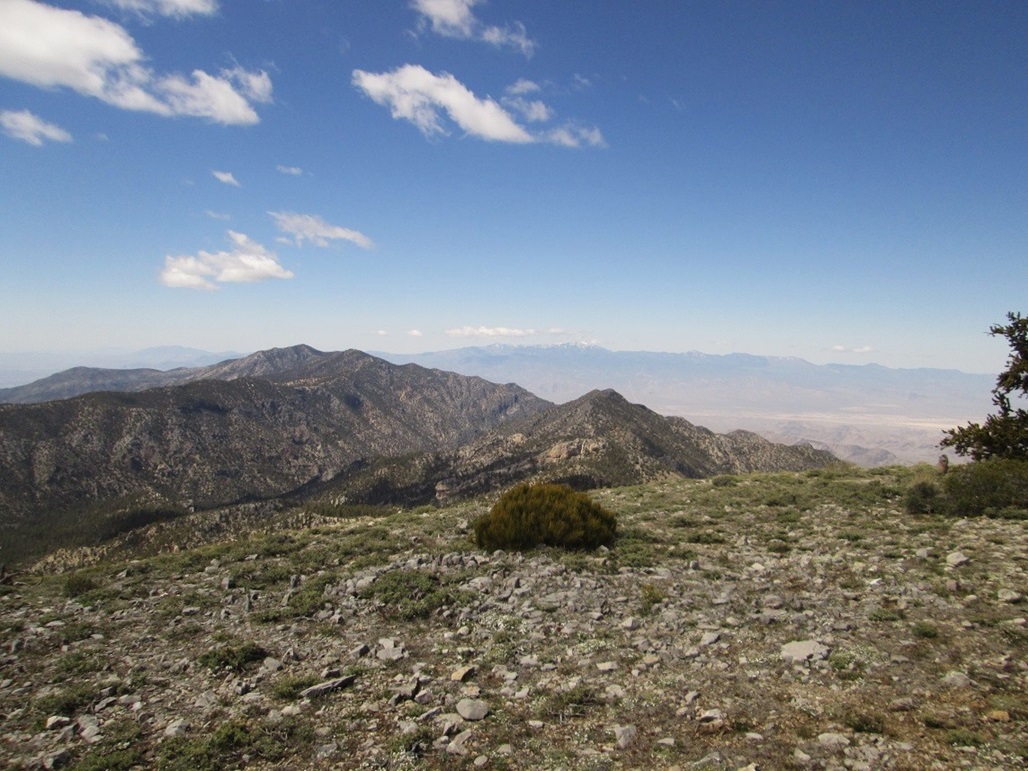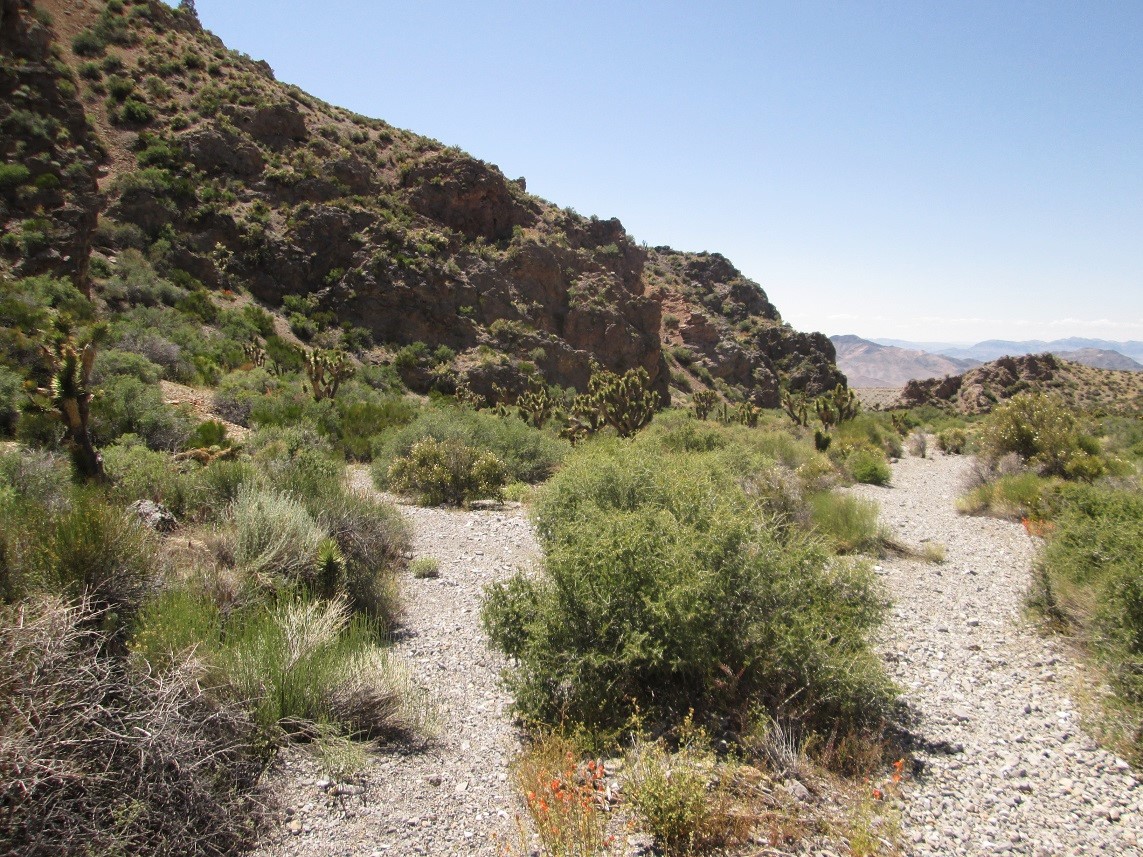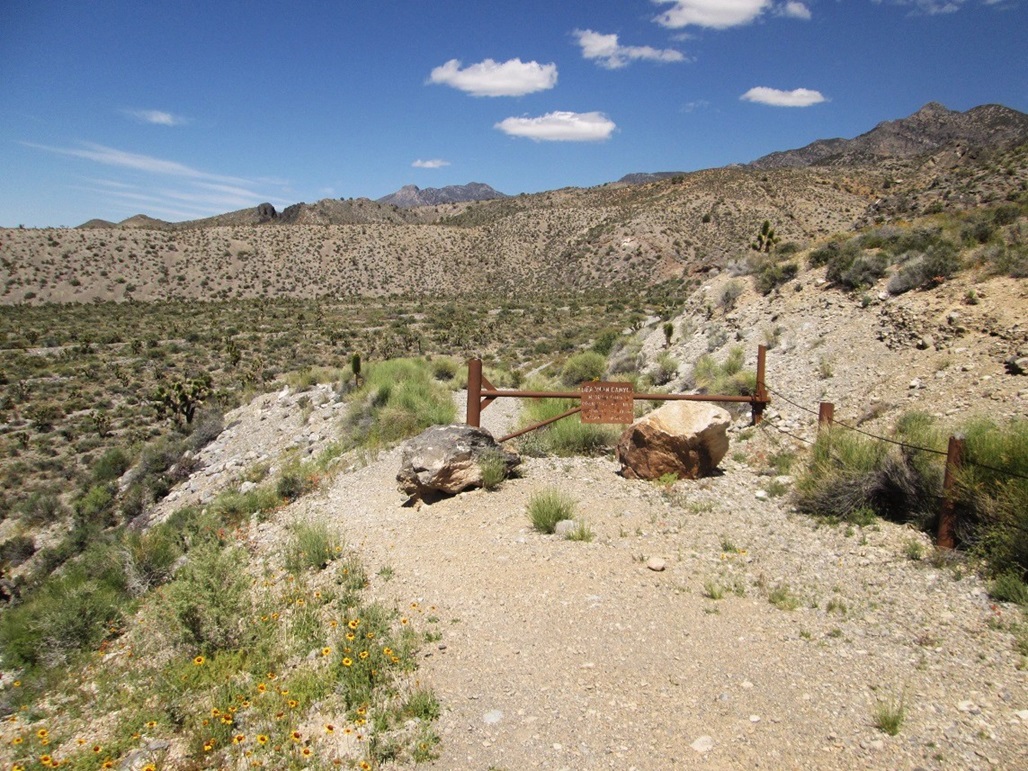
The Mountains of Nevada
• www.surgent.net
|
| Hayford Peak |
• Highpoint: Sheep Mountains • Highpoint: Desert National Wildlife Refuge • Clark County |
Date: May 22, 2016
• Elevation: 9,912 feet
• Prominence: 5,392 feet
• Distance: 15 miles
• Time: 10 hours
• Gain: 4,644 feet
• Conditions: Clear, cool with some clouds and light winds
• Teammates: Scott Peavy
Nevada
•
PB
Hayford Peak is the highest point of the Sheep Mountains that lie north of Las Vegas. The Sheep Mountains stretch for about 60 miles from south to north, and Hayford Peak is about midway in the range. There are many other peaks in the range that are nearly as high as Hayford Peak (9,912 feet), so the summit is not that easy to identify.
The summit's prominence is almost 5,400 feet, elevating Hayford Peak as one of a select few (as in 57) peaks in the coterminous United States with at least 5,000 feet of prominence. This would be my first 5,000-footer prom peak since 2005 (Ibapah Peak), not counting Haleakala Volcano in Hawaii, which was just a walk-up along a paved road. I was last here in 2009, when I hiked Gass Peak, which is south of the Sheep Range, closer in to Las Vegas.
The distance from the Phoenix area is nearly 350 miles, a little too far for a weekend getaway. However, Scott Peavy proposed that we go, and I agreed. Otherwise, I'd keep putting it off forever. We'd be doing it over a 36-hour time period, leaving Saturday afternoon and returning Sunday night.
Scott picked me up at noon Saturday. We drove through Las Vegas, got gas and food at the north end of the city, then drove about twenty more miles on northbound US-95 to the Corn Creek exit, the main access point into the giant Desert National Wildlife Refuge (DNWR), which encompasses most of the Sheep Mountains and surrounding desert.
From the highway, we drove about three miles on new pavement to the visitor's center. We were at the south end of the Sheep Mountains and could not see Hayford Peak from here. Immediately past the buildings, the pavements ends at a T-junction, now on Alamo Road. We went left. The elevation here is about 2,920 feet.
Now on Alamo Road, we travelled north across the sloping desert plain. To our right (east) were the Sheeps, and ahead was a smaller range called the Desert Mountains, and between it and the Sheeps, a smaller set of hills called the Black Hills (which were not black, by the way). The road was decent. It was hard-pack with fist-size rocks and gravel. Although the posted speed limit is 25 miles per hour, we rarely got past 15 miles per hour.
We stayed on the main road, passing Joe May and Cow Camp Roads along the way. The road gained elevation at a gentle incline, but consistently over the fifteen miles we were on it. We finally gained onto an elevated valley between the Desert and Black ranges. Up here, the ground was covered in a light yellow grass of some sort, and lots of Joshua trees. In about an hour, we were at the turn off onto Hidden Forest Road, fifteen miles from the T-junction. The map says this point is 4,490 feet elevation, meaning we had gained 1,570 feet. The incline was so gentle, it felt like we hadn't gained elevation at all.
We turned right onto Hidden Forest Road, heading east directly toward the Sheep Mountains. In about 3.7 miles, we had come to the road's end, elevation 5,820 feet. Although the pitch of the road was steeper than before, it was consistent. Still, I was surprised we had gained another 1,330 feet in those 3.7 miles.
The whole road portion was slow, taking us almost 90 minutes. We rolled into the parking area about 7:30 in the evening, surprised to see about five other vehicles there. However, no one was around. They had evidently hiked into the range already. The temperature was cool, into the low 50s. Scott slept on a cot, while I laid out a foam mat and slept in a sleeping bag directly on the ground, under the stars.
The day had been very windy the whole drive in, but now, the winds had calmed to near nothing. The sky was clear, and by 9 p.m., a full moon rose over the range. The moon was so bright, the whole camping area was lit up in that cool moonglow. I slept well, but woke at any small noise. I was up by 5 a.m., and so was Scott. After packing things up, we started hiking at 5:45 a.m.
The route to the top is long but not technical. It breaks into two parts: a 5-mile hike up Deadman Canyon toward the Hidden Forest, where there is an old cabin now maintained by the BLM, and a 2.5-mile hike up ridges to the summit. Many people choose to break the climb to Hayford Peak into two days, camping near (or inside) the cabin during the night. This is what we presumed all those people whose cars we saw had done. Many more people hike to the cabin and no farther. By itself, this hike is enjoyable and a good workout.
The road is gated closed at the far end of the parking area. We walked the road as it dropped about 70 feet into a broad drainage emanating from Deadman Canyon. Soon, we were within the canyon, the walls spread far apart for now. The road used to go all the way to the cabin, but has been closed for years now. The path was covered in small rocks and gravel, enough to make walking a little more laborious than normal. Joshua trees grew within the canyon down low. This wide-open portion runs about a mile, the trail sloping upward ever so slightly.
After about a mile, the walls close in, but the canyon is never too narrow. Usually the walls are about 50 feet apart at the closest, and usually a couple hundred feet apart otherwise. As we gained elevation, the flora slowly changed from desert-like scrub to mid-sized trees and plants, then eventually into bigger pine trees.
The tread would improve in places to more solid ground (always with rocks, though), and often, there were paths braiding in and out of the main wash, so we'd follow these parallel routes where footing was slightly better. By 8 a.m., we had arrived to the Hidden Forest cabin area, where sure enough, there were about a dozen boy scouts and their dads packing up after a night of camping. We stopped and rested about a half hour, talking with the guys.
To here, we had walked about 5 miles (some sources say as high as 5.7 miles), and had gained almost exactly 2,000 vertical feet. The incline was so consistent for those 5 miles that we barely noticed the uphill. It was the easiest 2,000 vertical feet I have ever gained. For reference purposes, the cabin is located southeast of Wireglass Spring, within the “D” (for Deadman) on the topographical map.
The images below are specifically for the Deadman Canyon portion of our hike, and were taken as we descended, when lighting was better. Thus, the photos go chronologically from the cabin area back to the parking area.
Now, we were on the steeper part of the hike, the remaining 2.5 miles in which we would gain another 2,600 feet (when drops and regains are accounted for) to the top. Facing the cabin, then looking to our left (north), we could see an obvious path heading up the bottom, then angling left up the hill. This is what we followed. We did not follow the ridge behind the cabin itself. We walked up this path for a couple hundred vertical feet, then lost the path. It just petered out in the leaves and twigs. We zigged and zagged a little bit, then angled left toward a ridge, where we now found cairns. From here to the top, we would follow cairns and/or paths, there being very few places where both were absent. Still low on the ridge, the trees were thick, but as we gained elevation, the terrain opened more, and for the first time, we could now see Hayford Peak's summit, topped by a small building and a couple antenna towers. We stayed high on the ridge, aiming for a bump with elevation 9,290 feet. We climbed the hill below it, then angled right and then down 150 feet to come to the last saddle below the top, the elevation here 9,100 feet. After a brief break, we then walked the remaining paths to the top. The paths get a little sloppy as they weave through the trees and rock outcrops. I was lagging by now. I hadn't hiked anything big in over two months, and I could also feel the effects of the elevation, nearing 10,000 feet. We arrived to the top at 10:30 a.m.. The top is bare of trees but hosts one building, a couple antenna structures and a big solar array panel. A helipad is nearby, so the workers can be ferried in. We found the register in a strongbox sitting atop the benchmark. We signed in, the first people here in about ten days. We then rested and snacked, but it was cold and breezy up this high, temperatures about 40 degrees. Clouds had built above us. Although not storm clouds, they blocked the sun, which cooled things. Looking around, the views were fantastic. To the west we could see Sheep Peak and distant Mount Charleston, still covered in snow. To the south we could see Gass Peak. Las Vegas lay beyond it, but not visible through the dusty haze. To the east were peaks almost as high as us. We stayed up top for just under twenty minutes. I was uncomfortably cold. The hike down went well, now that we had gravity in our favor. We retraced our route exactly with no trouble except where we descended the ridge toward the cabin. The trees were thicker here and we just needed to go slower to be sure we weren't going down a side ridge we shouldn't be on. We were back to the cabin in about 90 minutes. The scouts were long gone, and no one was here, so we took a longer break here, almost a half hour. I explored inside the cabin, We both sat at the picnic tables. I could have fallen asleep right here, but we still had those five miles of Deadman Canyon to hike out. The hike out of the canyon was long and tedious, but pleasant. Once out in the initial wide part of the canyon, I was ahead of Scott by about twenty paces when I came upon a rattlesnake lying in the path. Then Scott came up and we both looked at it, waiting for it to make its move. Finally, the snake coiled and shook its rattler, then it slithered into the nearby brush. We then took a detour around it ... through more brush which possibly hid more snakes. This was exciting! The last mile went on forever. It seemed like there was always another 200 feet of path to walk. Finally, we were out of the canyon and back to the cars, arriving at 2:45 p.m., a ten hour hike for us (counting the rest stops). We changed quickly, then started the long drive out, which took another 75 minutes. It was a little past 4 p.m. when we were back onto US-95. We stopped for dinner at the Railroad Pass Casino buffet. From there, we drove back to Phoenix, Scott dropping me off at my place at 10:30 p.m. It had been a fast 36 hours, and a very tiring hike, but I was elated to have hiked this peak after delaying it for so many years. We had good weather, good conditions, no logistical issues, and everything worked out. The hike was a delight, with great views and solitude. My thanks to Scott for driving and also, it was cool to see that rattlesnake at the end! My comments on the road: I read the reports from past hikers, and many state the road ranges from "passenger vehicle friendly" to "requires 4-wheel drive". Perhaps it depends on when one encounters the road. It appears to be regularly maintained. Scott drove a Subaru Forrester, which was more than adequate for the road. I don't believe 4-wheel drive is necessary, but high clearance would be. The road is covered in small rocks, some about 4 inches in diameter, to smaller gravel. There are few ruts, although down low, where it crosses arroyos, the "filler rock" is rougher than the road around it. I am hesitant to say that any passenger vehicle could handle the road. It's not a matter of smoothness and lack of big rocks or deep ruts. It's more a matter of the size of the tires on some passenger vehicles, the low clearance, and the inadequate suspension that these vehicles tend to have. The drive would be unbelievably slow and tedious. Small vehicle tires tend to be weak, not built for any sort of off-road travel. If you pop a tire out there, you may be stuck for a few hours, and if it's hot, a few hours could be lethal. |
|
